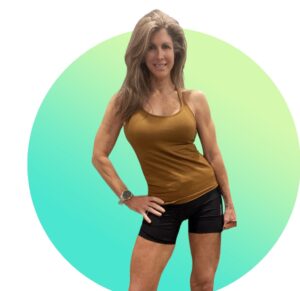For years, green tea has been hailed as a superfood, a elixir promising everything from boosted metabolism to enhanced cognitive function. Millions worldwide sip on this verdant beverage, believing it to be a cornerstone of a healthy lifestyle. But what if your seemingly innocuous cup of green tea is silently delivering a cocktail of harmful chemicals into your body? A groundbreaking investigation by Mamavation, an organization dedicated to identifying and educating consumers about toxic exposures, has just pulled back the curtain on a disturbing reality: many popular green tea brands, and other teas, are contaminated with “forever chemicals” known as PFAS.
This isn’t a minor concern; it’s a critical revelation that demands our attention. PFAS, or per- and polyfluoroalkyl substances, are a class of human-made chemicals notorious for their persistence in the environment and the human body. They don’t break down, earning them the ominous moniker “forever chemicals.” And the health implications are far from benign.
The Unsettling Findings: Green Tea, Earl Grey, and Chamomile Under Scrutiny
Mamavation’s rigorous investigation, conducted by an EPA-certified laboratory, involved testing 12 top-selling US green tea brands. The results were startling: over 50% of these brands were found to have detectable levels of PFAS. Even more concerning, a significant portion of these had quantifiable levels, meaning the concentration was high enough to be accurately measured. The most common PFAS found in green tea samples was PFOA (Perfluorooctanoic acid), with quantifiable levels ranging from 0.103 ng/g to 0.397 ng/g (parts per billion).
The contamination doesn’t stop at green tea. Mamavation expanded their investigation to other popular tea varieties, revealing an even bleaker picture:
- Earl Grey Tea: A staggering 91% of Earl Grey teas sampled had detectable PFAS. This beloved, aromatic black tea, often enjoyed for its distinctive bergamot flavor, appears to be a major source of PFAS exposure.
- Chamomile Tea: Even soothing chamomile tea, often consumed for its calming properties, wasn’t spared. 54% of chamomile teas tested contained detectable PFAS, with a notable portion having quantifiable levels of PFBA (Perfluorobutanoic acid). Some chamomile tea bags also tested positive for total fluorine, indicating potential PFAS contamination in the tea bag material itself.
These findings are not isolated incidents. Mamavation’s investigation cites other studies that have similarly detected PFAS in various tea types and even in bubble tea, further emphasizing the widespread nature of this problem within the tea industry.
Where Do These “Forever Chemicals” Come From?
The presence of PFAS in tea isn’t necessarily due to intentional addition. Instead, the investigation points to potential contamination during the processing of tea leaves. Many popular US green tea brands, for instance, source their leaves from countries like China, India, and Vietnam. During the industrial processing of these leaves, it’s believed that equipment can leach “forever chemicals” into the tea.
PFAS are widely used in industrial applications due to their water, stain, and grease-resistant properties. They can be found in non-stick cookware, food packaging, water-repellent clothing, and even firefighting foams. The pervasive nature of these chemicals in our environment means that agricultural practices, water sources, and manufacturing processes can all contribute to their presence in our food and beverages.
The Alarming Health Implications of PFAS Exposure
The casual nature of sipping tea belies the serious health risks associated with PFAS exposure. These chemicals are known endocrine disruptors, meaning they can interfere with the body’s delicate hormonal system. The scientific community has linked PFAS to a wide array of adverse health outcomes, including:
- Reduced Immunity: PFAS can weaken the immune system, making individuals more susceptible to infections and reducing the effectiveness of vaccines.
- Developmental Issues in Children: Exposure during critical developmental stages can lead to affected growth, learning difficulties, and behavioral problems in infants and older children. There’s also an increased risk of allergies and asthma.
- Metabolic Diseases: PFAS have been associated with an increased risk of metabolic disorders such as obesity and diabetes.
- Cardiovascular Disease: Emerging research suggests a link between PFAS exposure and cardiovascular issues.
- Reproductive Problems: For women, PFAS can lower the chances of getting pregnant and increase the risk of miscarriage. In men, they have been linked to lowered male fertility and even smaller penis size.
- Cancers: Perhaps most alarmingly, PFAS exposure has been associated with an increased risk of certain cancers, including kidney and testicular cancers.
- Thyroid Dysfunction: These chemicals can disrupt normal thyroid function, a gland crucial for regulating metabolism and growth.
- Increased Cholesterol Levels: PFAS have been shown to elevate cholesterol levels in the blood.
It’s crucial to understand that PFAS are not easily eliminated from the body. They accumulate over time, meaning even small, consistent exposures can lead to significant levels building up within our systems, increasing the risk of these debilitating health conditions.
What Can You Do? Empowering Consumers in a Contaminated World
The Mamavation study serves as a critical wake-up call. It highlights the pervasive nature of “forever chemicals” in our food supply and underscores the urgent need for greater transparency and regulation within the food industry. So, what steps can concerned consumers take to protect themselves and their families?
- Demand Transparency: Pressure tea brands and manufacturers to conduct independent testing for PFAS and to publicly disclose their results. Support companies that prioritize transparency and commit to sourcing and processing methods that minimize chemical contamination.
- Choose Wisely: While the full list of “clean” and contaminated brands is available through Mamavation, the general takeaway is to be highly selective. Look for brands that explicitly state their commitment to PFAS-free processing and ingredient sourcing. Organic certifications are a good starting point, but as the Mamavation study indicates, even some organic brands were found to have detectable PFAS, underscoring the need for specific PFAS testing.
- Explore Alternatives: Consider exploring herbal infusions or other beverages that are less likely to be impacted by these industrial processing issues. When selecting herbal teas, also investigate their sourcing and processing practices.
- Filter Your Water: Since PFAS can also contaminate drinking water, investing in a high-quality water filtration system that is certified to remove PFAS can further reduce your overall exposure.
- Minimize Other PFAS Exposures: Beyond tea, be mindful of other common sources of PFAS in your daily life. Avoid non-stick cookware (opt for cast iron, stainless steel, or ceramic instead), choose food packaging carefully (especially grease-resistant paper and microwave popcorn bags), and be cautious with stain-resistant fabrics and carpets.
- Support Advocacy: Support organizations like Mamavation that are conducting independent research and advocating for stronger regulations on toxic chemicals in consumer products.
- Spread Awareness: Share this vital information with your friends, family, and community. The more people who are aware of this issue, the greater the collective pressure on industries and regulators to enact meaningful change.
The Path Forward: A Call for Action
The Mamavation investigation into PFAS in tea is a stark reminder that even seemingly healthy choices can harbor hidden dangers in our modern world. It underscores the urgent need for a shift in how we approach food production and chemical regulation. Companies have a responsibility to ensure the safety of their products, and consumers have a right to know what they are consuming.
While the thought of “forever chemicals” in our comforting cup of tea can be unsettling, knowledge is power. By understanding the risks and taking proactive steps, we can make more informed choices for our health and demand a cleaner, safer food supply for everyone. The journey to a truly “clean” cup of tea may be ongoing, but with increased awareness and consumer demand, we can collectively push for a future where healthy choices are genuinely free from hidden contaminants.
Want to see the “LIST” showing the good, bad, or ugly results from this study? Check it out HERE. Is your tea on this list?
Cheers to your health!

Credit to: Mamavation









